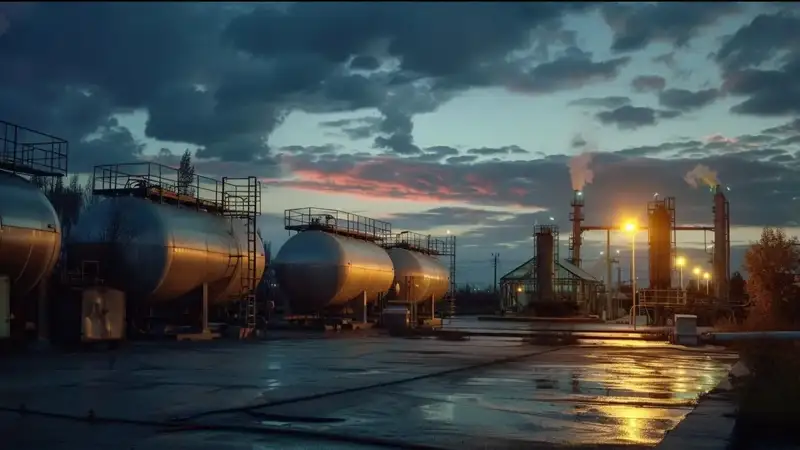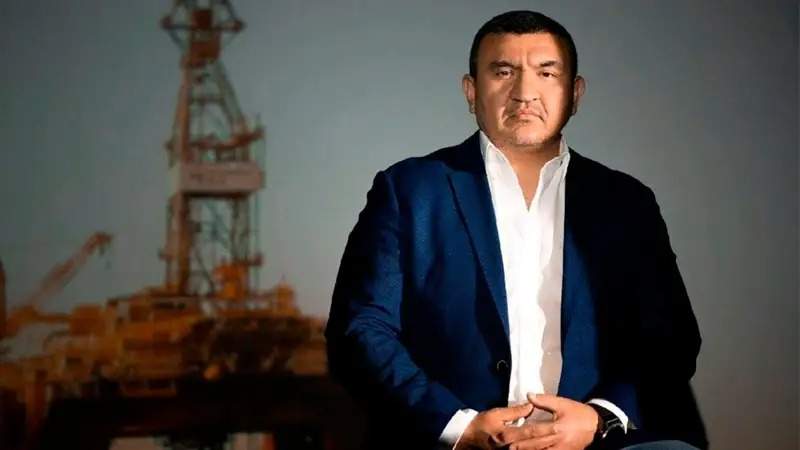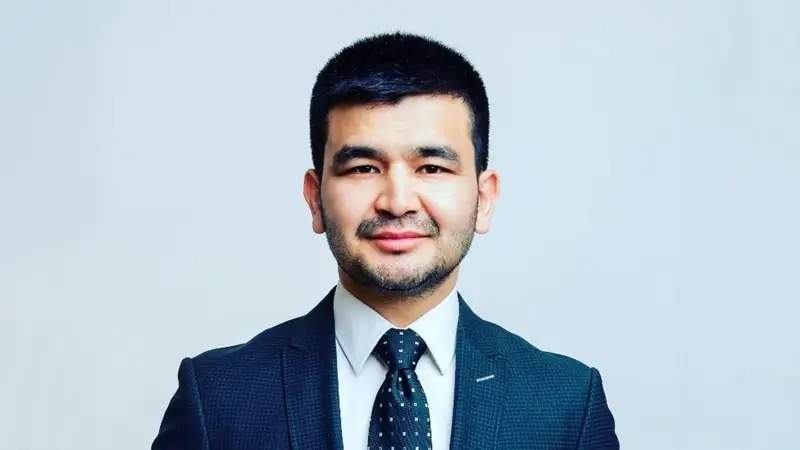Liquefied gas shortage in Kazakhstan – causes and solutions
In Kazakhstan, despite a rise in production, there remains a monthly deficit of 35,000 tons of liquefied gas. A correspondent from Kazinform News Agency examined the domestic gas market, the possible utilization of liquefied gas in the petrochemical industry, and the government’s strategies to tackle the increasing shortfall.

Where does the gas go?
The total volume of gas production in Kazakhstan is expected to reach 60 billion cubic meters. This figure was presented in the forecast balance of the Ministry of Energy of the Republic of Kazakhstan for 2024. The gas forecast balance up to 2030 has been formulated in accordance with the laws of the Republic of Kazakhstan “On Gas and Gas Supply” in collaboration with JSC “QazaqGaz”.
The ministry notes that the development pace of the gas sector in the country is steadily increasing. In 2023, Kazakhstan produced 59 billion 63 million cubic meters of gas - of which more than 11.8 billion was from Kashagan, over 16 billion from Tengiz, and about 22.4 billion from Karachaganak. These three major fields collectively account for 85% of the country’s gas production.
However, the Ministry of Energy confirmed the growing deficit of liquefied gas, despite an increase in production. It is known that the monthly production of oil gas to supply the domestic market in Kazakhstan amounts to about 130,000 tons. Today, Kazakhs consume up to 165,000 tons of gas each month. This results in a deficit of 35,000 tons each month.
Experts in the oil and gas industry note that about half of the extracted raw materials are injected back into the reservoir to maintain pressure at the fields.
“About 15 billion cubic meters are exported, half of which is returned to Kazakhstan under the SWOP scheme. Kazakhstan also has commitments to China to supply 10 billion cubic meters annually. Thus, there is about 30 billion cubic meters of commodity gas in Kazakhstan,” commented oil and gas industry expert Askar Ismailov.
Regarding gas consumption, he noted that about half of the commodity gas is used for electricity generation (about 10-15 billion m³), a third is directed to the population for domestic needs, and the remaining volumes go to industrial enterprises.
How will the deficit be covered?
The deficit of liquefied gas in Kazakhstan reaches 25%. The ministry has not yet disclosed the exact amount of liquefied gas at Kazakhstan’s gas stations. However, the government does not plan to increase its supply to the domestic market.

“The production volume of liquefied gas in Kazakhstan is around 3 million tons. This is above the domestic consumption. For now, this is sufficient to meet internal needs. Of course, one must understand that redirecting export volumes will lead to an increase in prices on the domestic market. However, purchasing liquefied gas from other countries will be more expensive. Therefore, this should be considered only as a last resort,” comments oil and gas expert Askar Ismailov.
Recently, the Minister of Energy Almasadam Satkaliyev suggested that vehicle drivers with gas installations should dismantle the equipment and choose between gasoline and diesel fuel. He mentioned that the department considers liquefied petroleum gas as a raw material for petrochemicals.
“The matter is that to start such productions, significant investments are required, which pay off over 20 years. After which, there may be significant financial benefits. This depends on many factors... I would position petrochemical projects as social first, and then as business. Unfortunately, petrochemistry will not provide the expected growth due to the fact that these enterprises will use foreign technologies, foreign equipment, even the design work will be done by foreign companies. And this is the main margin on these projects,” noted Askar Ismailov, commenting on the new ministry initiative.
Many also believe that this will definitely cause a deficit for motorists because petrochemical projects require long-term continuous supplies, without which production is impossible. However, there are no alternatives. It is impossible to replace liquefied gas with diesel or gasoline in production. Logically, the priority will be given to petrochemical enterprises.
According to Askar Ismailov, the gas deficit is related to two factors. Firstly, in 2022 a polypropylene production plant was launched, which consumes up to 550,000 tons of propane. Secondly, there is an increase in the number of vehicles using liquefied petroleum gas as fuel. Their number is now approaching 600,000, which is one in every ten vehicles in Kazakhstan.
“Of course, a few years ago it was hard to imagine that Kazakhstan would face such a rapid growth in consumption. I believe that to satisfy domestic demand, all export volumes will have to be redirected to the domestic market next year,” said the oil and gas expert.
Transition of transport from liquefied gas to another
During the last speech by the Minister of Energy of the Republic of Kazakhstan, Almasadam Satkaliyev mentioned an initiative to transition transport from liquefied gas to another. Industry specialists see this initiative as economically beneficial for Kazakhstan.
“Technologies already have practical applications in many countries. Secondly, the development of compressed natural gas filling stations will significantly increase transit through Kazakhstan from China and Central Asia, which will positively affect Kazakhstan’s economy. The main task is to increase the volume of commercial gas, either by increasing production or by purchasing cheap gas from neighboring countries. Time will show how the relevant agency and the national gas operator will achieve these goals. I hope that QazaqGaz, which has identified 62 trillion cubic meters of gas in Kazakhstan, will bring production to the required volumes,” said Askar Ismailov.
The industry expert explained that associated gas, which constitutes a major part of gas production in Kazakhstan, will decrease over time along with oil production. Therefore, the production of natural gas today is a pressing issue.
Gas price growth below inflation
The maximum wholesale price for a ton of liquefied petroleum gas from July 1, 2024, is 45,000 tenge. However, the price for petrochemical enterprises is twice as high.
Analysis of consumption shows a trend of increasing demand for liquefied gas in the regions, especially in border areas, due to the low price compared to neighboring countries. According to the Ministry of Energy, retail prices for liquefied gas in Kazakhstan vary by region from 59 to 94 tenge per liter, in Russia — 171 tenge per liter, in Kyrgyzstan — 149 tenge per liter, in Azerbaijan — 323 tenge per liter, in Tajikistan — 183 tenge per liter.
Energy sector analyst Abzal Narymbetov believes that gas prices need to be gradually increased.

“The price increase of gas in Kazakhstan is below the inflation level. One could say this negatively impacts production if gas prices are not raised. For example, the neighboring country of Uzbekistan plans to balance the cost of various types of fuel and gas at market prices over the next three years. In Uzbekistan, despite a large population, resources are scarce, so they understand that if they do not endure this situation, which is currently causing a “shock”, the future will be even more difficult,” comments an economist.
He added that without raising prices, production in the country will weaken. According to Narymbetov, many enterprises in Kazakhstan have not been updated for many years. This is due to the fact that prices for such types of fuels as gasoline, kerosene, and gas are below global market levels. Enterprises will wear out further if they do not earn enough money. Essentially, if we do not transition to a market economy, there will be a constant gas deficit.
“Of course, I do not want prices to be as high as in developed countries. There is an opportunity to find favorable prices both for production and for consumers. Moreover, the program of tariff restrictions on oil and gas products in Kazakhstan has negatively impacted the investment climate. Investors will withdraw from a project if they learn that they will not make a profit in the short term before investing money in a specific project. The entire major fields in the country - Karachaganak, Tengiz, and Kashagan - are committed to supplying their produced products to the domestic market, except for foreign companies. In the country, when prices are low, they do not make a profit. As a result, the technical base of some enterprises is heavily worn and on the verge of bankruptcy,” summarized the expert.
The Ministry of Energy plans to create strategic fuel reserves
According to the English analytical agency IHS Markit, by 2030, the gasoline deficit in Kazakhstan may reach 2 million tons, and diesel fuel in the worst-case scenario — up to 4 million tons.
According to forecasts provided by the Ministry of Energy, in 25 years, the contribution of the oil refining industry to the country’s GDP will increase to 2.8%. For this, the ministry sets itself the task of increasing oil refining volumes from 17 to 27 million tons per year. The ministry plans to expand and modernize three existing plants. A plan to build a fourth refinery is to be developed by 2030.
As the Ministry of Energy assures, in 25 years, Kazakhstani refineries may begin to experience a shortage of raw materials due to the depletion of existing fields. As a result, more oil will have to be extracted from new fields — Tengiz and Kashagan. To avoid problems, it is planned to supply up to 3.5 million tons of black gold annually for processing in the domestic market. Initially, the department aims to establish strategic fuel reserves, followed by an increase in the export of Kazakhstani oil products to Central Asia and Europe.
